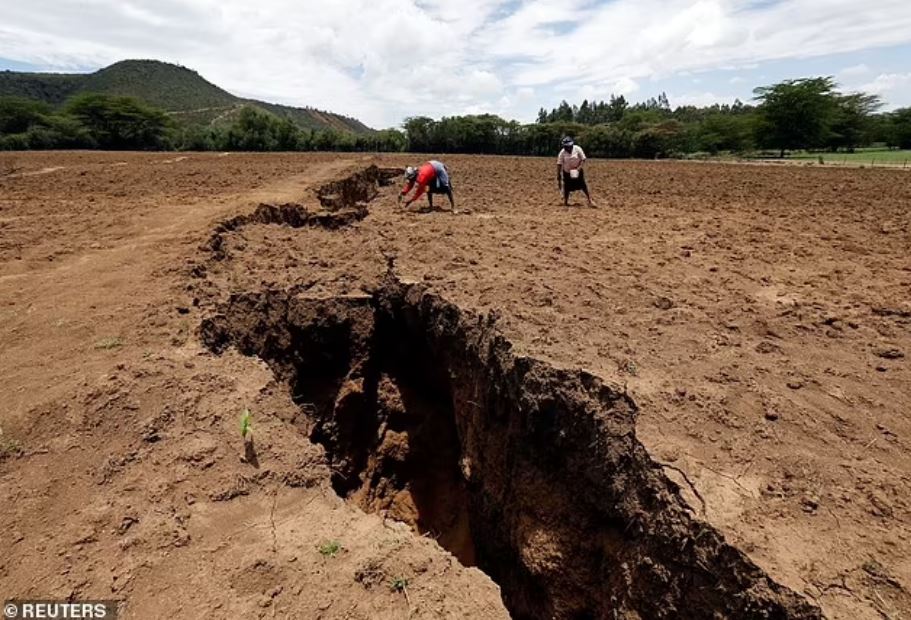This event will not happen quickly or dramatically but will be a very slow process.
Beneath the seemingly calm surface of Earth lies a constant state of change. We live on giant tectonic plates, propelled by the molten core beneath, that are constantly shifting, causing earthquakes, volcanoes, and even tearing continents apart. Right now, Africa is in the midst of a slow but profound geological breakup that could completely change the face of the planet for tens of millions of years to come.
The split is taking place along the East African Rift System (EARS), one of the world’s largest rift systems, stretching thousands of kilometers through countries such as Ethiopia, Kenya, Tanzania and Mozambique. In the process, the Somali tectonic plate – the smaller part of Africa – will gradually separate from the larger Nubian plate.

Illustration
This process has been going on for about 25 million years, and while the rate of separation is slow, there are signs on the surface that the movement is still ongoing. In 2018, a large crack in Kenya's Rift Valley made headlines, although some scientists believe it may have been caused by soil erosion rather than a direct result of tectonic separation.
But this is just a small part of the larger picture of Africa’s breakup. It won’t be a quick or dramatic event, but a very slow process. A vast sea is predicted to form between the two tectonic plates, turning the eastern part of Africa into a new continent, much like the Red Sea formed and separated Arabia from Africa.
This is not the first time Earth has seen continents split and merge. Hundreds of millions of years ago, the continents that exist today were once joined together into the supercontinent Pangaea. Then, due to the movement of tectonic plates, Pangaea was pulled apart into the continents we see today. The evidence is that identical fossils of Mesosaurus, a 290-million-year-old reptile, have been found in both South America and Africa, suggesting that they once lay side by side.
Continents have come together and broken apart at least three times in Earth’s history. The current breakup of East Africa is just another chapter in a geological book that spans billions of years. Whether humans will survive long enough to see it through to its completion is another question.
Source: https://giadinh.suckhoedoisong.vn/tai-sao-luc-dia-chau-phi-dang-bi-chia-tach-thanh-hai-giai-ma-bi-mat-dia-chat-am-i-suot-hang-chuc-trieu-nam-172241105070025382.htm




![[Photo] Ho Chi Minh City holds funeral for former President Tran Duc Luong](https://vphoto.vietnam.vn/thumb/1200x675/vietnam/resource/IMAGE/2025/5/24/9c1858ebd3d04170b6cef2e6bcb2019e)


![[Photo] The Government Standing Committee works with ministries and branches on the real estate market situation.](https://vphoto.vietnam.vn/thumb/1200x675/vietnam/resource/IMAGE/2025/5/24/e9b5bc2313d14c9499b8c9b83226adba)





















![[Photo] Party and State leaders visit former President Tran Duc Luong](https://vphoto.vietnam.vn/thumb/1200x675/vietnam/resource/IMAGE/2025/5/24/960db9b19102400e8df68d5a6caadcf6)

































































Comment (0)